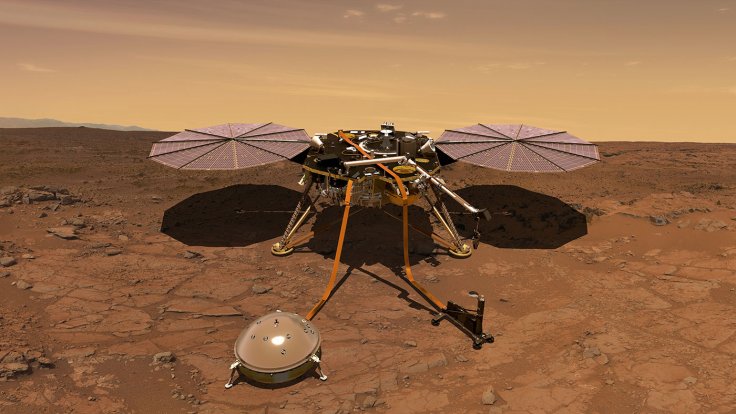
Ahead of its planned mission to the Red Planet three years down the lane, NASA has invited the press for a media briefing at 2 p.m. PDT on Thursday, March 29, at NASA's Jet Propulsion Laboratory in Pasadena, California.
NASA's InSight will take off from the West Coast on May 5 aboard a United Launch Alliance Atlas V rocket from Space Launch Complex-3 at Vandenberg Air Force Base in California. If weathr permits, it will be visible from Santa Maria to San Diego, California.
The briefing to be aired live on NASA TV, will have experts drawn from different fields as below:
Thomas Zurbuchen, associate administrator for NASA's Science Mission Directorate
Bruce Banerdt, InSight principal investigator at JPL
Tom Hoffman, InSight project manager at JPL
Jaime Singer, InSight instrument deployment lead at JPL
The briefing session will be interactive with the public encouraged to ask questions on social media during the briefing using #asknasa, said NASA in a sttement.
NASA's Interior Exploration using Seismic Investigations, Geodesy and Heat Transport (InSight) lander will study the deep interior of Mars to explore how the rocky planets formed more than four billion years ago, including Earth and its moon. The lander's instruments include a seismometer to detect marsquakes and measure the flow of heat in the planet's subsurface.
InSight will delve deep beneath the surface of Mars, detecting the fingerprints of the processes of terrestrial planet formation, measuring the planet's "vital signs": Its "pulse" (seismology), "temperature" (heat flow probe), and "reflexes" (precision tracking), said NASA on its website.
Why Mars?
Previous NASA missions to Mars have investigated its surface history such as canyons, volcanoes, rocks and soil, but no attempt has been made to probe the planet's earliest evolution - its building blocks - which can only be found by looking far below the surface.
Since Mars has been less geologically active than the Earth with no plate tectonics, it actually retains a more complete record of its history in its own basic planetary building blocks: its core, mantle and crust, explains NASA.The InSight mission will now provide glimpses into the evolutionary processes of all of the rocky planets.
In terms of planetary formation, Mars is a veritable "Goldilocks" planet big enough to have undergone the earliest internal heating and differentiation such as separation of the crust, mantle and core that shaped the terrestrial planets like Earth, Venus, Mercury, Moon, but small enough to have retained the signature of those processes over the next four billion years.
The InSight mission will follow the legacy of NASA's Mars Phoenix mission and its lander to Mars will probe the planet's structure and composition as well as its tectonic activity as it relates to all terrestrial planets, including Earth.
Spacecraft and Payload
The InSight lander is equipped with two science instruments that will conduct the first "check-up" of Mars in more than 4.5 billion years, measuring its "pulse", or internal activity; its temperature; and its "reflexes" when the planet wobbles when it is pulled by the Sun and its moons.
Its two instruments, the Seismic Experiment for Interior Structure (SEIS), provided by the French Space Agency (CNES), with the participation of the Institut de Physique du Globe de Paris (IPGP), the Swiss Federal Institute of Technology (ETH), the Max Planck Institute for Solar System Research (MPS), Imperial College and the Jet Propulsion Laboratory (JPL); and the Heat Flow and Physical Properties Package (HP3), provided by the German Space Agency (DLR). In addition, the Rotation and Interior Structure Experiment (RISE), led by JPL for the spacecraft communication system.









